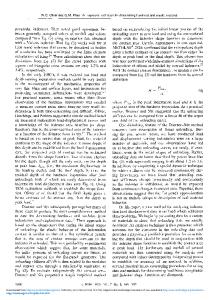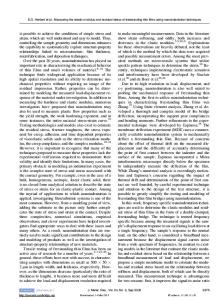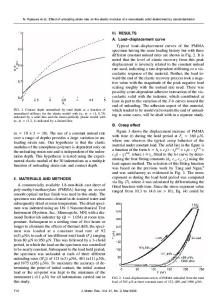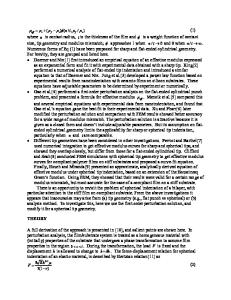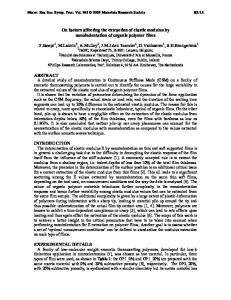Determining the elastic modulus and hardness of an ultra-thin film on a substrate using nanoindentation
- PDF / 4,896,731 Bytes
- 39 Pages / 595 x 842 pts (A4) Page_size
- 86 Downloads / 407 Views
The Harvard community has made this article openly available. Please share how this access benefits you. Your story matters.
Citation
Li, Han, and Joost J. Vlassak. 2009. Determining the elastic modulus and hardness of an ultrathin film on a substrate using nanoindentation. Journal of Materials Research 24(3): 11141126.
Published Version
doi:10.1557/JMR.2009.0144
Accessed
June 13, 2013 2:35:34 AM EDT
Citable Link
http://nrs.harvard.edu/urn-3:HUL.InstRepos:4262334
Terms of Use
This article was downloaded from Harvard University's DASH repository, and is made available under the terms and conditions applicable to Open Access Policy Articles, as set forth at http://nrs.harvard.edu/urn-3:HUL.InstRepos:dash.current.termsof-use#OAP
(Article begins on next page)
Determining the elastic modulus and hardness of an ultrathin film on a substrate using nanoindentation Han Li , Joost J. Vlassak *
School of Engineering and Applied Sciences, Harvard University Cambridge, Massachusetts, 02138, USA
Abstract – A data analysis procedure has been developed to estimate the contact area in an elasto-plastic indentation of a thin film bonded to a substrate. The procedure can be used to derive the elastic modulus and hardness of the film from the indentation load, displacement, and contact stiffness data at indentation depths that are a significant fraction of the film thickness. The analysis is based on Yu’s elastic solution for the contact of a rigid conical punch on a layered half-space and uses an approach similar to the Oliver-Pharr method for bulk materials. The methodology is demonstrated for both compliant films on stiff substrates and the reverse combination and shows improved accuracy over previous methods. Keywords: Nanoindentation, Elastic properties, Substrate effect, Thin films *Corresponding author. e-mail: [email protected]
1. Introduction Since 1992, the analysis method proposed by Oliver and Pharr [1] has been established as the standard procedure for determining the hardness and elastic modulus from the indentation load-displacement curves for bulk materials. In the Oliver-Pharr method, the projected contact area between indenter tip and material is estimated using the equations for the e l a s t i c contact of an indenter of arbitrary shape on a uniform and isotropic half space [2]. The indentation modulus and hardness of the material can thus be calculated without the necessity of imaging the indentation after the experiment. The Oliver-Pharr method was initially developed for analyzing indentations in bulk materials, not for films on substrates, and no information about a possible substrate is included in the analysis. The Oliver-Pharr method is, however, frequently used by researchers to interpret indentations performed on thin films in an attempt to obtain approximate film properties regardless of the effect of substrate properties on the measurement. The accuracy of such a measurement depends on the film and substrate properties and on the indentation depth as a fraction of the total film t
Data Loading...
